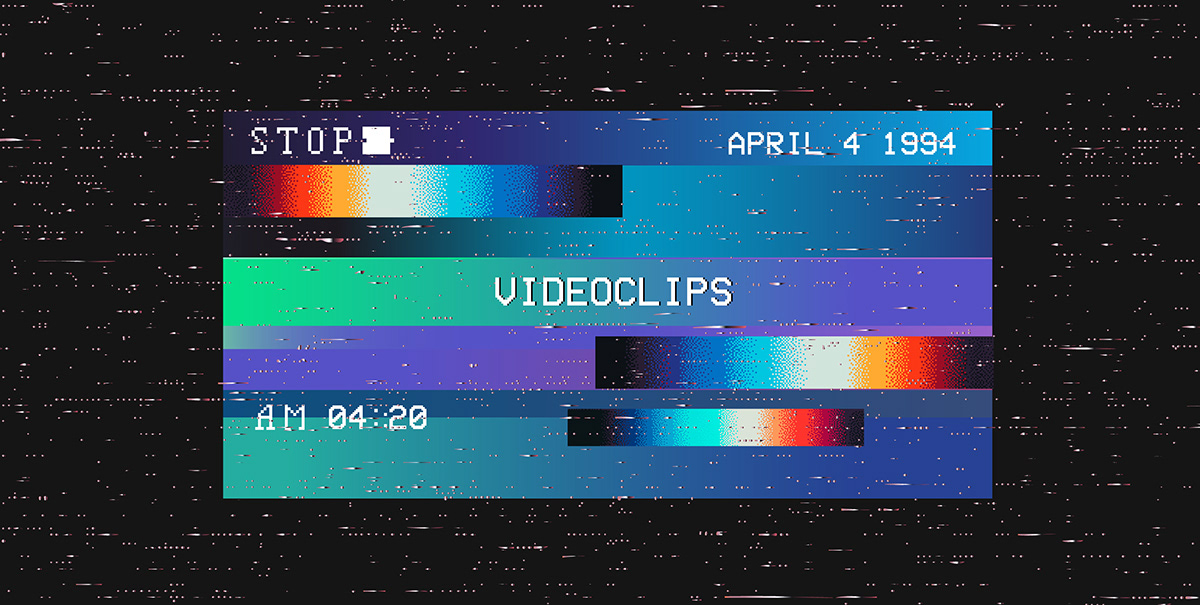In the realm of video production, the right soundtrack can elevate your project from ordinary to extraordinary. When working with platforms like Storyblocks, integrating custom music into your 4K video projects can make a world of difference. This guide will walk you through the benefits of adding your own tunes and why it’s a game-changer for your storytelling. Let’s dive in!
Why Use Custom Music in Videos?

Custom music can transform a simple video into an emotional experience. Here’s why you should consider incorporating it into your Storyblocks 4K projects:
- Personalization: Using custom music allows you to tailor the audio landscape to fit the unique essence of your video. Whether your project is upbeat, dramatic, or somber, your music can reflect that mood perfectly.
- Brand Identity: If you are a content creator or a business, using unique tracks can help to reinforce your brand identity. Consistent musical elements can become recognizable to your audience, helping you establish a distinct voice.
- Originality: There’s nothing worse than hearing a track used in multiple videos. Custom music guarantees that your projects stand out from the crowd, offering viewers a fresh auditory experience.
- Creative Freedom: When you create or choose your own music, you have complete artistic control. You can experiment with different genres, instruments, and compositions to find the perfect fit for your video narrative.
- Enhanced Emotional Impact: Music is a powerful tool for evoking emotions. Custom scores can heighten suspense, joy, or nostalgia, ensuring that your audience feels exactly what you want them to feel.
In summary, adding custom music to your Storyblocks video projects not only enriches the viewing experience but also aligns the auditory elements with your unique vision. So, why settle for generic when you can create something truly exceptional?
Also Read This: Can I Post My EyeEm Posts to Instagram as Well?
3. Step-by-Step Guide to Adding Custom Music

Adding custom music to your Storyblocks 4K video projects is a fantastic way to enhance your storytelling and create a more immersive experience for your viewers. Here’s a simple, step-by-step guide to help you through the process:
- Log into Your Storyblocks Account: Start by logging into your Storyblocks account. If you don’t have one yet, signing up is quick and easy!
- Access Your Video Project: Navigate to the video project where you want to add custom music. Open your video editing software if you’re working externally or open the Storyblocks online editor if you’re using it.
- Upload Your Music: If you have custom music saved on your device, look for the 'Upload' or 'Import' option in your editing platform. Make sure your music files are in a compatible format (like .mp3 or .wav).
- Drag and Drop: Once uploaded, simply drag and drop your music file onto the audio timeline of your video editing software. This allows the music to overlay your video.
- Edit Audio Levels: After adding the music, make sure to adjust the audio levels. You want your music to complement your video without overpowering dialogues or sound effects.
- Finalize and Export: Preview your video to ensure that the music fits well with the visuals. Once satisfied, export your project, and voila! Your custom music is now part of your Storyblocks video!
Following these easy steps will make the process of adding custom music seamless and enjoyable. Happy editing!
Also Read This: How to download Adobe Stock Image without watermark for free
4. Choosing the Right Music for Your Project

Selecting the perfect music for your Storyblocks video project can be a game-changer. The right soundtrack not only sets the mood but also enhances the narrative you’re trying to convey. Here are some valuable tips to consider when choosing music:
- Understand Your Project's Tone: Is your video upbeat and fun, or is it somber and reflective? The music you select should match the emotional vibe of your project.
- Consider Your Audience: Think about who will be watching your video. Music that resonates with your target demographic will help engage them more effectively.
- Match the Tempo: The pace of the music should align with the visuals in your video. For fast-paced edits, choose lively tracks; for slow transitions, opt for softer melodies.
- Incorporate Branding: If you’re using the video for business purposes, try to select music that reflects your brand's identity. Consistency in sound can strengthen brand recognition.
- Use Royalty-Free Music: Make sure you utilize music that you have the rights to use. Storyblocks offers a great collection of royalty-free tracks that you can explore.
Remember, the right music can truly elevate your project! Take the time to explore different options, and don’t hesitate to experiment with various tracks until you find the perfect fit.
Also Read This: Guide to Downloading an Image from Google Slides
5. Editing Music to Fit Your Video

When you're diving into the world of video editing, one of the crucial elements to consider is the music. After all, the right soundtrack can elevate your project from good to absolutely outstanding! But sometimes, the music you chose doesn’t perfectly align with the pace or mood of your video. Fear not! Here are some handy tips to edit music effectively.
1. Trim the Music: Start with trimming the music to fit your video timeline. Most editing tools allow you to cut the audio to the precise length you need. Look for the section in the music that resonates with your video's vibe and keep that part while cutting out any unnecessary intro or outro.
2. Adjust Volume Levels: Balance is key! You want your music to complement your visuals, not overpower them. Make sure to adjust the volume so it supports dialogue or sound effects without overshadowing them.
3. Use Fades: Sudden starts and stops can be jarring. Incorporating fade-ins and fade-outs can make the transitions smoother and more professional. Most editing software includes this feature, allowing for seamless transitions in and out of music.
4. Cut and Loop: If you love a specific part of a song but need it to last longer, consider looping it. This can also create a unique flow that matches perfectly with your visuals.
5. Layer Sounds: Consider layering additional sound bites or effects over your music track. This extra depth can enhance viewer engagement and align with the story you're telling.
By taking the time to edit your music thoughtfully, you can create a soundtrack that perfectly aligns with your video, captivating your audience on every level.
Also Read This: How to Use Behance for a Copywriting Portfolio and Gain More Clients
6. Finalizing Your Project with Sound
Once you've edited your video and the music beautifully intertwines with your visuals, the next step is to finalize your project. The sound is just as essential as the visuals, so let's ensure that everything sounds as polished as it looks!
1. Final Mix: Start with a final mix of your audio tracks. This is your opportunity to adjust the overall sound levels, ensuring that your background music, dialogue, and sound effects are perfectly balanced. Tools within your editing software can aid in achieving a well-mixed soundscape.
2. Check for Clarity: Listen closely! Ensure that every element, especially dialogue, is clear and easily understood. If anything sounds muffled or unclear, don’t hesitate to go back and re-edit.
3. Use Audio Filters: Many editing programs come with audio filters that can enhance sound quality. Consider using equalizers or noise reduction tools to eliminate background noise and make your audio crisp and clean.
4. Test Play: Don’t skip this step! Play your project back multiple times. Try to listen in different environments—on headphones, through speakers, or even on your phone—to get the best sense of how it sounds across various settings.
5. Export Settings: When you're satisfied with your sound, ensure you select the right export settings. Choose a format that retains audio quality, aligning with the platform where your video will be shared. Whether it’s for YouTube, a social media platform, or a presentation, the right settings can make a significant difference.
Finalizing your project with sound may seem daunting, but with careful attention to detail, it can take your video project from good to spectacular!
Adding Custom Music to Your Storyblocks 4K Video Projects
Incorporating custom music into your Storyblocks 4K video projects can significantly enhance the overall quality and emotional impact of your work. Storyblocks provides a vast library of video and audio content, however, personalizing your project with unique musical elements can make it stand out. Here’s how to successfully add custom music to your projects:
Steps to Add Custom Music:
- Select Your Music: Choose a track that complements the theme and mood of your video. You can use music from royalty-free sites or create your own.
- Download the Music: Ensure that the audio file is in a compatible format such as MP3, WAV, or AIFF and is accessible on your device.
- Open Your Video Editing Software: Launch your preferred video editing software that supports 4K resolution.
- Import Video and Music Files: Import your Storyblocks 4K video along with your custom music track into the editing program.
- Align Audio and Video: Drag your music track into the timeline and align it with the visuals. Adjust volume levels as needed to ensure clarity.
- Export Your Final Project: Once satisfied with the integration, export your video project in the desired format.
Tips for Best Results:
- Choose music that evokes the right emotions for your audience.
- Keep the audio levels balanced to avoid overpowering the visual elements.
- Use music transitions to create a seamless flow between clips.
By following these steps, you can successfully integrate custom music into your Storyblocks 4K video projects, making them more engaging and unique.
Conclusion: Adding custom music to your video can elevate your storytelling by creating a deeper connection with your audience, so take the time to choose tracks that truly resonate with your content.
 admin
admin








